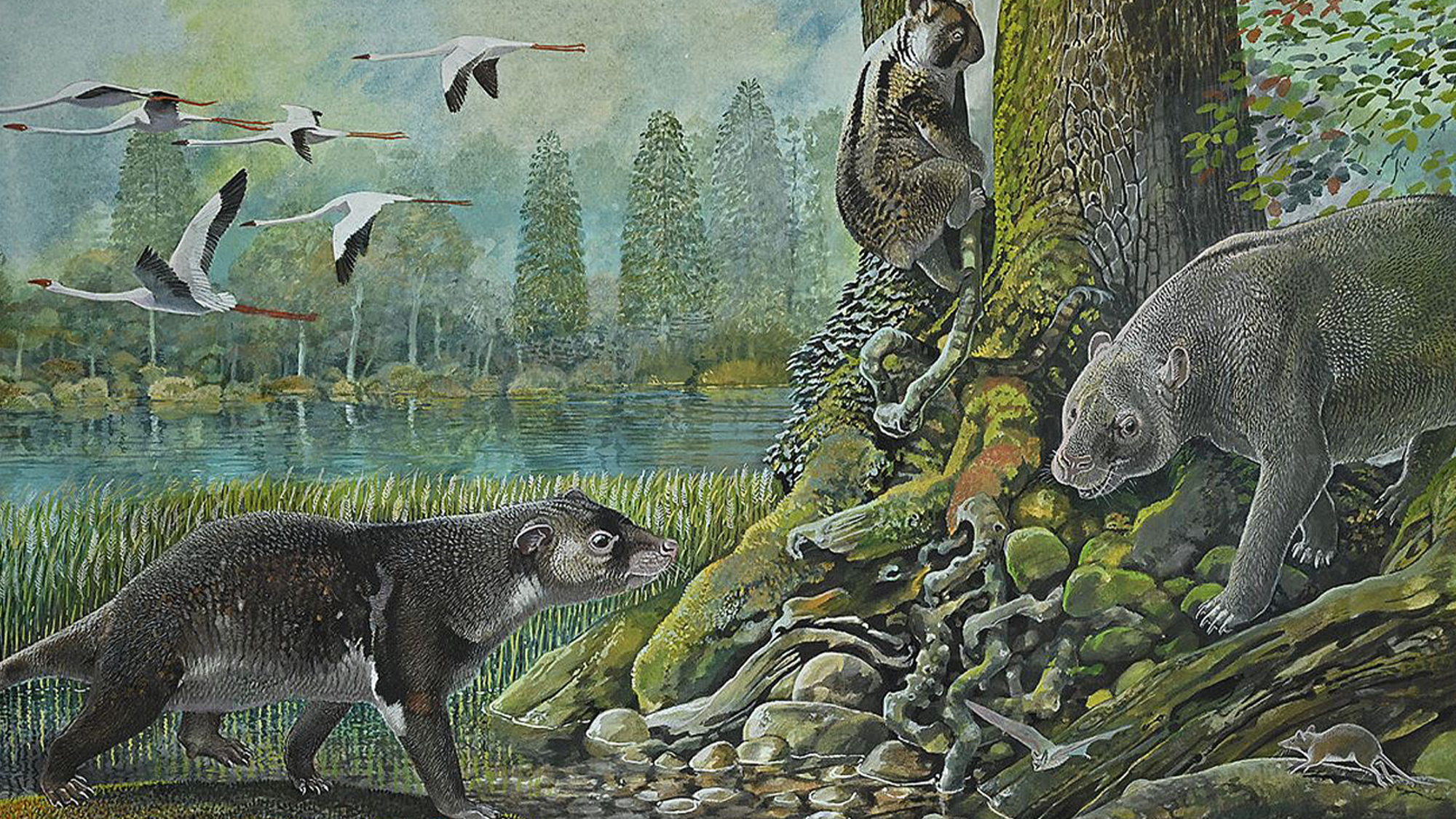

Australia is currently home to the only living species of their endangered and iconic koalas, but there once were multiple species spread across the continent. Now, the discovery of another marsupial ancient relative is helping scientists fill in a 30 million year evolutionary gap. The findings are detailed in a study published September 4 in the journal Scientific Reports.
[Related: With bulging eyes and a killer smile, this sabertooth was an absolute nightmare.]
In 2014 and 2020, study co-author Arthur Crichton, a PhD student at Flinders University in Adelaide, Australia, found fossil teeth of the new species, named Lumakoala blackae, at the Pwerte Marnte Marnte fossil site in central Australia. The teeth are believed to be roughly 25 million years old.
“Our computer analysis of its evolutionary relationships indicates that Lumakoala is a member of the koala family (Phascolarctidae) or a close relative, but it also resembles several much older fossil marsupials called Thylacotinga and Chulpasia from the 55 million-year-old Tingamarra site in northeastern Australia,” Crichton said in a statement.
According to Chrichton, it was previously suggested that the enigmatic Thylacotinga and Chulpasia may have been more closely related to marsupials from South America. This new discovery of Lumakoala suggests that they could actually be early relatives of herbivorous Australian marsupials including possums, kangaroos, koalas, and wombats.
“This group (Diprotodontia) is extremely diverse today, but nothing is known about the first half of their evolution due to a long gap in the fossil record,” said Crichton.
If the study’s hypothesis is correct, the diprotodontian fossil record would be aged back by another 30 million years. Additionally, wombats, kangaroos, koalas and possums split off from other marsupials between roughly 65 million and 50 million years ago.

“These Tingamarran marsupials are less mysterious than we thought, and now appear to be ancient relatives of younger, more familiar groups like koalas,” Robin Beck, study co-author and evolutionary biologist at the University of Salford in England, said in a statement. “It shows how finding new fossils like Lumakoala, even if only a few teeth, can revolutionize our understanding of the history of life on Earth.”
The study also raises some new questions, including whether these relatives of herbivorous marsupials in Australia once lived in Antarctica and South America. According to Beck, some South American fossils look very similar to the marsupials found at the Tingamarra site.
[Related: This 500-pound Australian marsupial had feet made for walkin.’]
It also reports that two other types of koala called Madakoala and Nimiokoala lived alongside Lumakoala and filled in different ecological niches in the forests that flourished in central Australia about 25 million years ago. The late Oligocene (about 23–25 million years ago) was “kind of the koala heyday,” according to the Flinders University paleontologist and study co-author Gavin Prideaux.
“Until now, there’s been no record of koalas ever being in the Northern Territory; now there are three different species from a single fossil site,” Prideaux said in a statement. “While we have only one koala species today, we now know there were at least seven from the late Oligocene – along with giant koala-like marsupials called ilariids.”
At this time, iliariids were the largest marsupials living in Australia, weighing in at up to 440 pounds. Iliariids lived alongside a strong-toothed wombat relative named Mukupirna fortidentata and a strange possum named Chunia pledgei.
